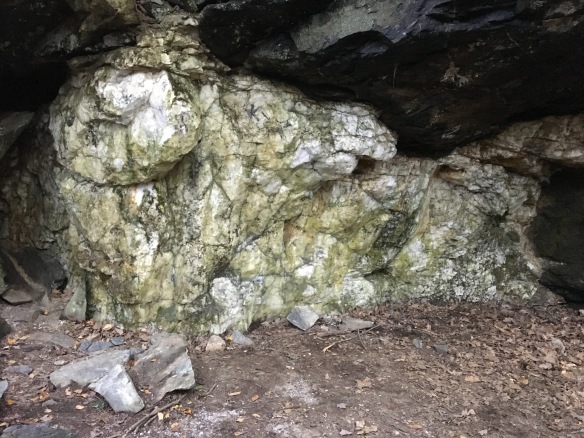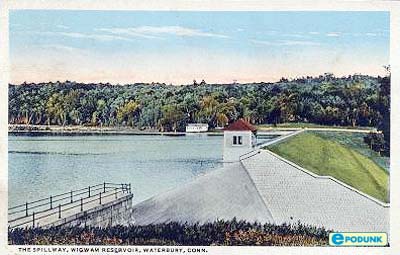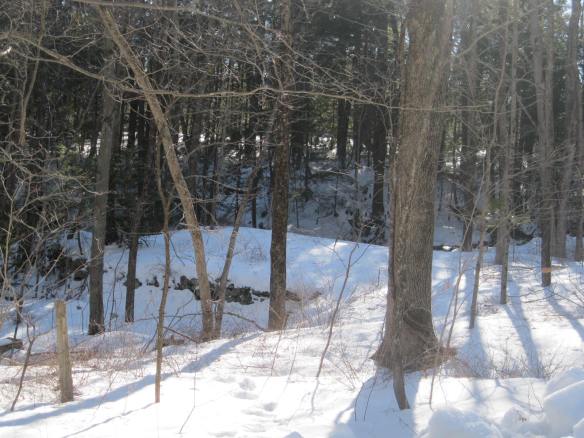As with many of our other protected lands (Lover’s Leap State Park, Burr Pond State Park, the White Memorial Foundation), the Hidden Valley Preserve of Washington’s Steep Rock Association was once the site of industrial operations. The Hidden Valley, quiet today except for the sound of the rushing Shepaug River, once echoed with the sounds of quartz mining and locomotives. The glories of a New England Fall presents the perfect time to visit this piece of Litchfield County’s industrial heritage.

A short walk along the northwestern bank of the river brings the hiker to the spectacular Thoreau Bridge, erected in 2015.

Quotes from Thoreau are emblazoned on the bridge.

On the eastern bank of the Shepaug River is this monument and bridged dedicated in honor of Washington native and West Point graduate Stephen Reich, killed in Afghanistan in 2005.

The trail passes old footpaths, cart paths, and the bed of the railroad used to haul the quartz out of the area, often to the Hudson River.

Stone retaining walls in the woods mark the old road beds used to get wagons and carts to the mine.

Fragments of quartz line the trail approaching the mine.

The quartz itself, a surface mine in operation from the 1800s to 1905.
Quartz, the most common mineral on the earth’s surface, was an important industrial product in American history. Initially quartz was used for knives, scrapers, and arrowheads. With the coming of the industrial revolution, the uses of quartz changed. It was pulverized and used as a filler in paints. (The Bridgeport Wood Finishing Company, a major paint-making operation, was located just a few miles away along the Housatonic in New Milford.) Another use of quartz was as an abrasive, like sandpaper. The primary use of quartz, however, was for glass, which is essentially melted quartz.
The hiker needs no excuse to travel to the beautiful woods of the Hidden Valley, but keeping one’s eyes open reveals a rich part of the county’s history.




















